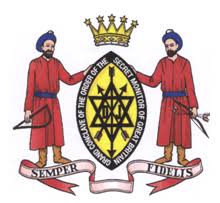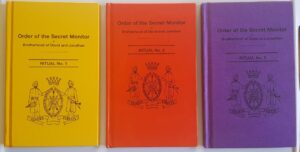The Order of the Secret Monitor was constituted in London in 1887, and now comprises over 600 Conclaves, spread between 30 or more Provinces, each of these Provinces having a Provincial Grand Supreme Ruler as its leader.
It is administered from Mark Masons Hall in London, and is separate and distinct from all other Orders in Freemasonry. The Order is non-denominational, and the only necessary qualification for brethren seeking to join, is that of being a Master Mason.
The Order consists of three Degrees:
- The First, Induction into the Order.
- The Second or Princes Degree.
- Supreme Ruler Degree, which a Brother only receives when installed as the Supreme Ruler of his Conclave. Apart from being installed as the Supreme Ruler, he is also further commissioned, which entitles him to a much wider rank and status, able to conduct ceremonies in any Conclave, not just his own; a certificate is issued to that effect. A Brother may be installed as a Supreme Ruler within this Order without having first gone through the Chair of his Craft Lodge.

The two ceremonies that a Candidate will take are based on the friendship that existed between David and Jonathan, which can be found in the Old Testament Book of Samuel, Chapters 20, 22 and 23.

Their beautiful and inspiring precepts taking us back to a time when the Hebrews, who were wandering defenceless in the wilderness, forged an impregnable bond with one another, for mutual protection and support.
David and Jonathan swore before God a covenant of eternal friendship, and they saved each other’s lives on many occasions.
Accordingly our ritual generates a deeper understanding of the Craft principle of brotherly love. For at every turn of life, at every crisis of fate, a Secret Monitor may confidently look to his fellow brethren to give him caution, to prompt him to good actions, and to warn him of doubtful ones, to offer him skilful and effective advice, solace in time of sorrow, and to exercise watchful Brotherly care and concern over him and his family at all times.

This is an impressive and moving list of generous undertakings, achieved by every Brother in the Conclave being allocated to one of the four Visiting Deacons (the Visiting Deacon being similar to the Almoner in the Craft). Every Visiting Deacon is responsible for contacting each of their respective charges between regular meetings, to ascertain his wellbeing, and also that of his family. He gives his report in open Conclave as to why any Brother may possibly be absent or prevented from attending the meeting. Great store is placed on the friendship which arises between the Visiting Deacon and his charges.
